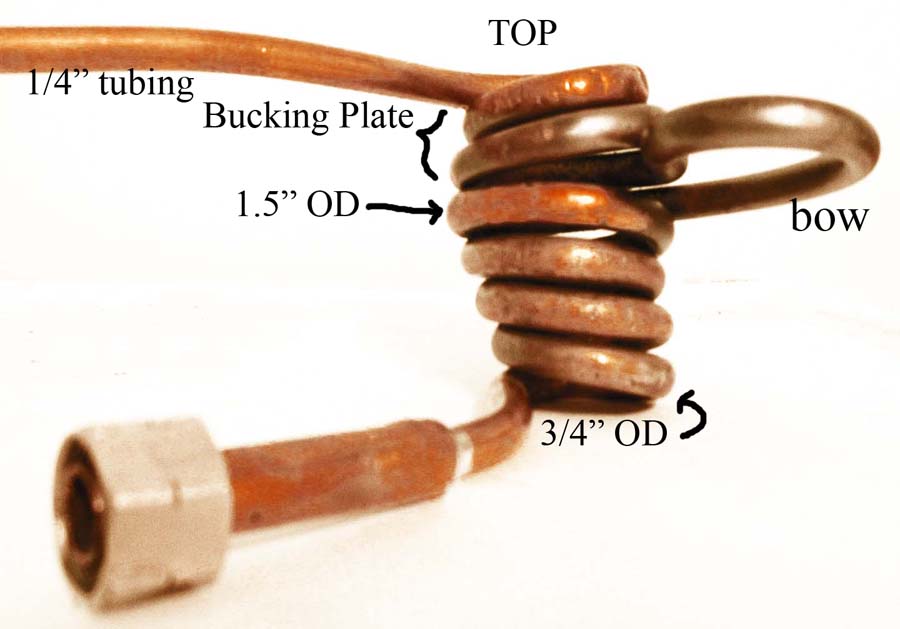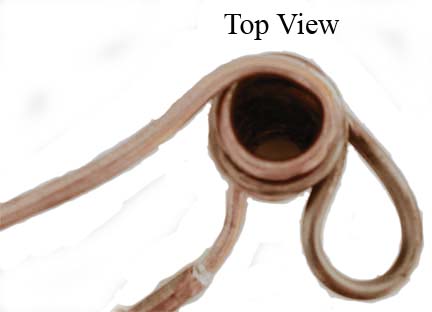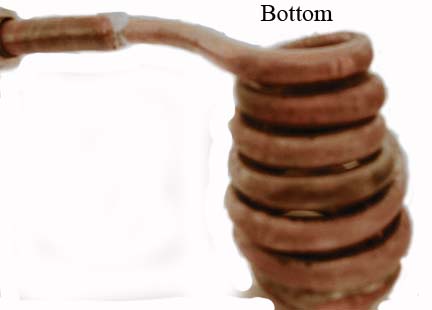Induction Heater Levitation Tutorial
Current going through the coil sets up a magnetic field. This field, according to Lenz's law, sets up an opposite magnetic field in the workpiece. This magnetic field opposes the one inducing it, and repels the object upwards. The picture below shows a snapshot in time. The field alternates. The coil also increases in diameter as one moves upwards. This results in there being a magnetic force underneath the object, but nothing directly above it. This results in an upwards force. The object moves up until the distance of the workpiece to the inner surface of the coil is such that the magnetic field is too weak to drive it up any more. The bucking plate at the top turns in the opposite direction. The two fields cancel out so there is no upward driving force at this point. It is a null zone.
Now, the magnetic field created in the workpiece creates circulating eddy currents. These currents heat the workpiece. The closer the workpiece gets to the coil the better the coupling, which creates more heating. You will find if you gently push the object down with a quartz rod it will heat up very quickly.
Below are some diagrams showing what was just discussed.
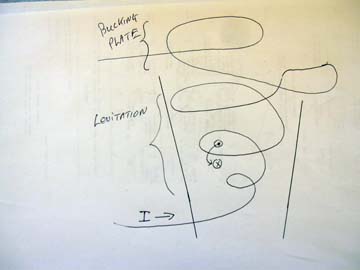
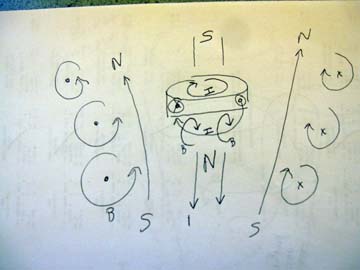
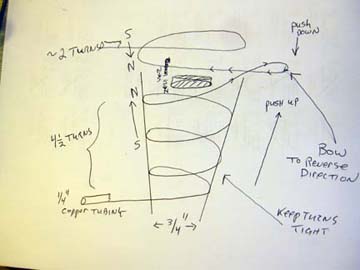
Below are the pictures of the levitation coil. The turns are tight, so you will need to use sand or salt so you can bend it without deforming the tubular shape. The coil is a conical helix. The bottom has a smaller inner diameter than the top. Make a bow to reverse the direction and turn 1-2.5 coils in the opposite direction for the bucking plate. Keep the coil tight, but make sure the coils don't short. You will need a quartz rod to hold the object in place until it levitates, or while it is heating. This is one levitation coil that I made. I made another one that is slightly larger. When I am levitating dense metals I keep the bucking plate further from the main coil to minimize the downward forces on the workpiece.
